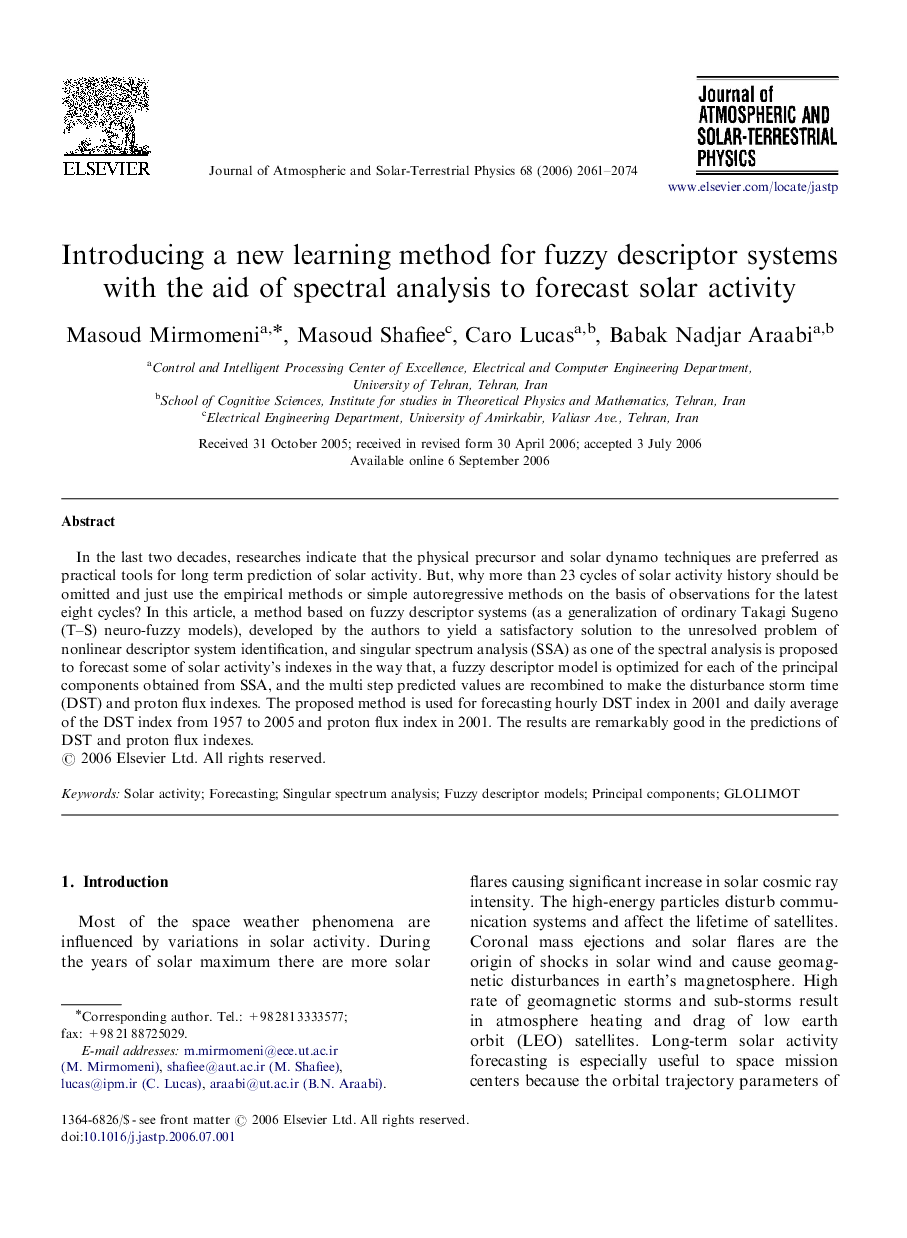| Article ID | Journal | Published Year | Pages | File Type |
|---|---|---|---|---|
| 1777762 | Journal of Atmospheric and Solar-Terrestrial Physics | 2006 | 14 Pages |
In the last two decades, researches indicate that the physical precursor and solar dynamo techniques are preferred as practical tools for long term prediction of solar activity. But, why more than 23 cycles of solar activity history should be omitted and just use the empirical methods or simple autoregressive methods on the basis of observations for the latest eight cycles? In this article, a method based on fuzzy descriptor systems (as a generalization of ordinary Takagi Sugeno (T–S) neuro-fuzzy models), developed by the authors to yield a satisfactory solution to the unresolved problem of nonlinear descriptor system identification, and singular spectrum analysis (SSA) as one of the spectral analysis is proposed to forecast some of solar activity's indexes in the way that, a fuzzy descriptor model is optimized for each of the principal components obtained from SSA, and the multi step predicted values are recombined to make the disturbance storm time (DST) and proton flux indexes. The proposed method is used for forecasting hourly DST index in 2001 and daily average of the DST index from 1957 to 2005 and proton flux index in 2001. The results are remarkably good in the predictions of DST and proton flux indexes.
